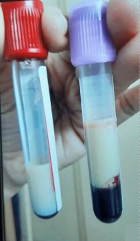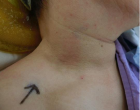Table of Contents
Organizational and Human Factors in Dentistry: A Macroergonomic Approach to Maximize Dental Practice Performance and Minimize Burnout and Psychophysical Stress
Published on: 16th December, 2024
The psychophysical impact of a high-complexity environment such as the dental office is not a novelty. This article outlines the organizational and human factors that impact the overall health of dentists, assistants, hygienists, and administrative staff. A careless organizational and human factors approach cannot only function as a stress and error trigger but also affect the highly precise requirements of dentistry and task performance in the daily demands of the office. Ergonomics and human factors principles guidelines should be structured and taught from the basics in dental schools and supported by prevention programs and interventions in the dental professional field, as in other industries, to promote safety, health, and efficiency within the integration of humans, systems, and environments.Usually, the main focus of dentistry research is the physical aspect of the job; the high rates of musculoskeletal disorders are a real problem, but the cognitive-organizational element of the job is not a minimal issue, which highly contributes to physical-emotional exhaustion in the work environment.A fatigued mind impacts the physical aspect of the job, and physical fatigue impacts the mental aspect of the job. This dual effect in a job that requires dealing with anxiety and fear patients, administrative situations in the office, financial aspects, and technical and skill aspects from the dentist, among other requirements, makes dentistry a unique profession.This article addresses the components of the factors that promote cognitive depletion in our field and provides simple tips on controlling them to avoid burnout among dentists. It highlights the importance of awareness of how we manage the organization in the office and the effect on human behavior and performance. It wants to bring to light a common problem for dental practitioners and the workforce to prevent health and performance decrease.
Comparison of Trigger Point Lidocaine Injection and Stabilization Splint Use in Myofascial Orofacial Pain Treatment
Published on: 20th September, 2024
Objective: This study aims to compare the short-, medium-, and long-term efficacy of trigger point local anesthetic injection and stabilization splint use for myofascial orofacial pain.Materials and methods: Group 1 comprised 15 patients who received trigger point local anesthetic injections (LAI), while Group 2 comprised 15 patients who were treated with a stabilization splint (SS). Analysis of pain-free maximum mouth opening (MMO) measurements, jaw disability checklists (JDC), short-form McGill pain questionnaires (SF-MPQ), and Visual analog scales (VAS) were used for comparison between the groups.Results: The LAI group showed a significantly greater increase in pain-free MMO in all terms (p < 0.001) and had significantly lower values on the JDC in both the medium (p = 0.026) and the long term (p = 0.006). The SF-MPQ was significantly lower in the medium term (p = 0.001) in the LAI group; the VAS showed a significantly greater decrease in the short (p = 0.016) and medium terms (p < 0.001) in the LAI group.Conclusion: The results indicate that a treatment choice can be made between TN lidocaine injection and occlusal splint based on patient tolerance.
Distinguishing Traditional and Internal Craze Lines in Human Enamel
Published on: 18th September, 2024
Objectives: This study aims to introduce and differentiate between traditional craze lines and a newly identified type of line in enamel, termed an “internal craze line.” This novel classification enhances diagnostic precision and carries significant clinical implications for treatment strategies. The goal is to provide a clear description of these two types of lines, discuss their unique clinical implications, and highlight their differing appearances and staining characteristics, contributing to improved understanding and management of enamel anomalies.Method and materials: Four extracted teeth exhibiting visible and internal craze lines were selected and examined using a stereo microscope to observe the structural characteristics of the lines. Cross-sections of the coronal parts of the teeth were prepared to document the differences between traditional craze lines (extending from the dentin-enamel junction [DEJ] to the enamel surface) and internal craze lines (originating at the DEJ but terminating midway through the enamel). Additionally, intraoral observations were conducted under high magnification to identify the visual differences between the two types of lines, noting that traditional craze lines can be stained while internal craze lines cannot.Results: Microscopic examination revealed two distinct types of lines: traditional craze lines extending from the DEJ to the enamel surface and internal craze lines terminating within the enamel. Intraoral observations confirmed that these lines could be distinguished under high magnification. Traditional craze lines appear as continuous lines reaching the enamel surface and can be stained, whereas internal craze lines are shorter, do not extend to the surface, and cannot be stained.Conclusion: The identification of internal craze lines presents significant clinical implications. Differentiating between traditional and internal craze lines can enhance diagnostic accuracy and inform treatment decisions. Recognizing internal craze lines might indicate different etiologies or risk profiles compared to traditional craze lines, influencing preventive and therapeutic strategies in dental practice. Further research is needed to explore the prevalence, causes, and long-term impacts of internal craze lines.
Rapid Upper Limb Assessment (RULA) and Rodgers Muscle Fatigue Analysis (RMFA) of Dentists using Optical Microscope, Loupes, or No Magnification during Endodontic Access: A Pilot Study
Published on: 29th August, 2024
Dentistry is a challenging and demanding physical profession, and this impacts not only the quality of the task outcomes but also the professional’s quality of life. The nature of dentistry demands prolonged static and awkward seated postures, frequent motions, positioning struggles, and working distances to the oral cavity for strategic procedure management, which become cumulative challenges over the working days, prone to discomfort, pain, or injuries, and musculoskeletal disorders for the operator.The limitations of the naked eye in dentistry, particularly in terms of visual information and resolution, underscore the need for visual aids. These aids are crucial for achieving the precision required for accurate procedures. Also, visual aids, such as magnifying loupes and the operative microscope, have been in the market for a while, and their proper use has shown ergonomic benefits that promote a neutral working posture and changes in work practice-oriented to control unbalanced awkward posture and motions.In this study, the Rapid Upper Limb Assessment RULA compares the posture between naked-eye dentistry, conventional loupes, and operative microscope, and with the observational assessment, determine the risk of developing musculoskeletal disorders and the need for priority of change. The Rodgers muscle fatigue analysis RMFA is used to predict fatigue in the muscular regions of the body during specific dental tasks.
Procedure for Determining Root Canal Length in Endodontics: A Mathematical Approach
Published on: 15th July, 2024
Intraoral and extraoral radiographic investigations play a fundamental role in all dental disciplines. For endodontic treatment it is necessary, in addition to measuring with apex locators, also various radiographs in the preoperative, operative, and final control phase.Even in surgical practice, and especially in implantology, the radiographic investigation remains essential to limit errors or complications.The mathematical approach for the determination of the length of work in endodontics is a simple and costless procedure. This work intends to expose the reasons why it should, in certain cases, be taken into consideration.
Effectiveness of an Ayurvedic Gel for Tooth Pain Relief Due to Dental Caries: A Randomized Controlled Trial
Published on: 19th June, 2024
Aim: To evaluate the effectiveness of an ayurvedic gel in tooth pain reduction due to dental caries. Materials and methods: This in vivo cross-over design study enrolled adults with at least one tooth with caries and a symptom of pain after the application of an ice stimulus. Two hundred patients were screened and eligible patients were enrolled in the study. Forty-five subjects completed washout phases before each recall visit. During each recall visit, subjects evaluated pain relief following an ice bar stimulus and one random finger-tip application of a treatment i.e. Ayurveda Herbal gel containing clove oil, camphor, and menthol (Ayurveda Herbal Gel Group), and two control formulations: a gel without active ingredients and commercial olive oil as a surrogate of home remedy. At each assessment, subjects used a stopwatch to record the onset of pain relief and tooth pain using visual analog scores (VAS), dental pain scores (DPS), and relief from tooth pain by dental pain relief scores (DPRS). After each treatment, subjects recorded their satisfaction with the provided treatment using a four-point satisfaction index. Data were tabulated and statistical analysis was performed with (ANCOVA) and two-way ANOVA with a p - value of 0.05 considered statistically significant. Results: Forty-five subjects (28 males and 17 females) completed the entire study without any adverse events. Application of the Ayurveda gel resulted in a significantly faster onset of pain relief (2.47 min) in comparison to the onset of pain relief after 4 minutes recorded with the controls (p < 0.05). Subjects reported lower VAS and DPS scores over the study period of evaluation when using the Ayurveda gel compared to the application of each control formulation. Subjects also reported greater relief of pain and greater satisfaction after the application of the Ayurveda gel as compared to the controls. Conclusion: Significantly better tooth pain relief from caries was observed from an Ayurveda Herbal gel than from controls.
Reducing CO2 in Passive House Adapted Low-cost Tropical Homes?
Published on: 26th April, 2024
The background of this novel study is how to apply an empirically adjusted Passive House concept in the tropics - beyond its otherwise prevailing global standards. Even though well-insulated houses have been on the planet since people settled down in some of their first dwellings, passive in the 21st century is different. It includes strict rules for airtightness and fitting of windows along with a sophisticated concept for artificial ventilation. Fresh air reachable from outside by filtered ventilation with heat recovery describes the heart of the system - if natural outside air is not preferable, it is convenient just in seasons with thermal comfort.Hence, the purpose and aim of the study presented here is to use a less common and at the same time more cost-saving approach: It might seem that the modern type of passive house entails the same standards that have been developed firmly on its own global market niche. However, this article tries to contribute toward a new development of modern passive homes for low-cost affordable tropical and subtropical houses in their entirety.As a concluding note, the author states that nobody has ever disproven this evolving concept as a combination of airtightness and a new way of forced ventilation without heat- or coolness recovery which is highly applicable for low-cost residential areas in tropical countries. By generating lower temperatures, it can help to surpass the overheating caused by climate change in certain tropical climate zones in higher altitudes and during cooler seasons. The condition is that the occupants are willing to accept a thermal comfort of up to 28 °C and humidity in its 70s and 80s.
Use of Lactobacillus reuteri DSM 17938 in the treatment of Stage II-III Periodontitis: Longitudinal Study of 36 Patients
Published on: 11th March, 2024
Periodontal diseases are a consequence of the host’s inflammatory and immune mechanisms against dysbiotic bacterial plaque. Given the role of probiotics in biofilm control and modulation of dysbiosis, this study assessed the efficacy of a specific strain of Lactobacillus Reuteri, DSM 17938, in the treatment of stage II and III periodontitis. 36 patients were randomly allocated into two groups: group A, the treated group; and Group B, the control group. The treated group and the control group both underwent initial periodontal debridement. Patients received medications after undergoing periodontal debridement. Clinical parameters were assessed at baseline and at 21 days. All parameters evaluated, Probing Depth (PD), Full Mouth Bleeding score (FMBS), and Full Mouth Plaque Score (FMPS) showed a reduction over time in both groups. The treated group showed a better reduction (p = 0.05) for PD. As far as the depth of probing is concerned, the decrease observed between the control group and the group treated with probiotics is such as to be considered statistically significant and since the average of the values for the treated group is higher than that of the control group, the use of probiotics has an efficacy of medium statistical importance in the treatment of periodontal disease.

HSPI: We're glad you're here. Please click "create a new Query" if you are a new visitor to our website and need further information from us.
If you are already a member of our network and need to keep track of any developments regarding a question you have already submitted, click "take me to my Query."

















































































































































